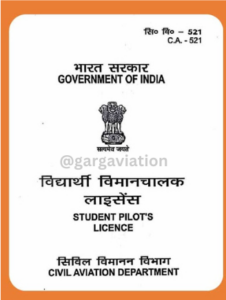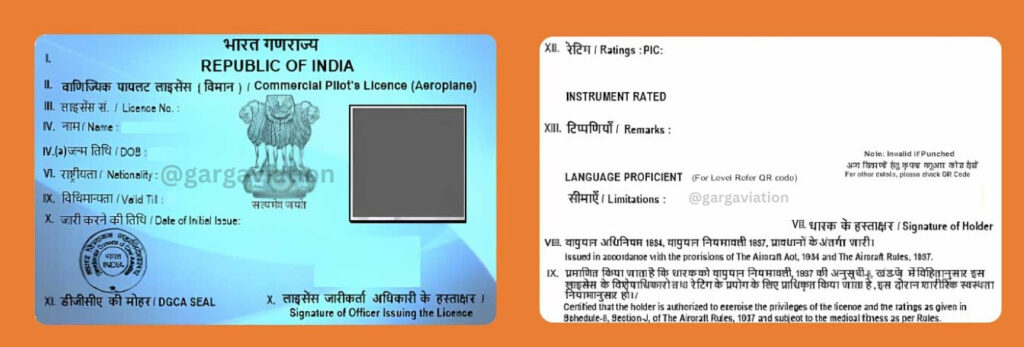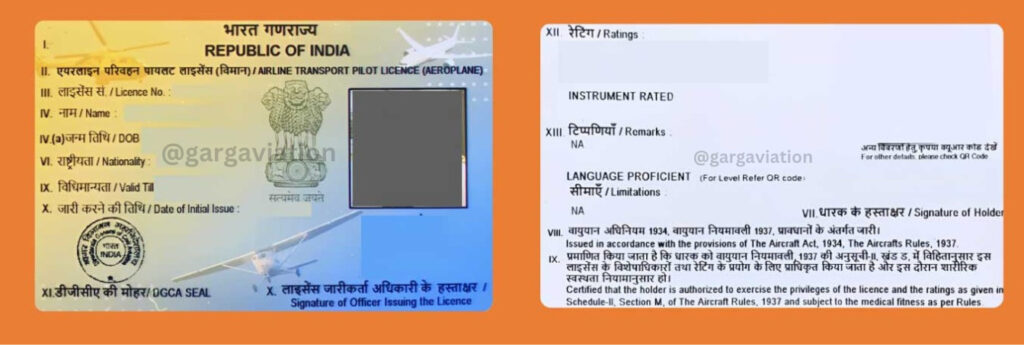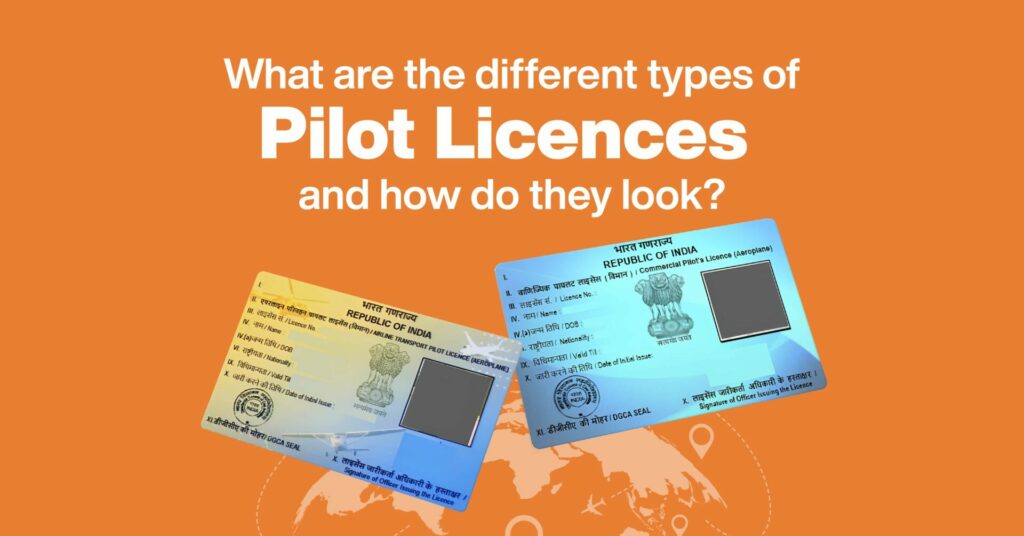Do you ever wonder if pilots fly with their licenses? Just like you need a license to drive a car, pilots too need a license to fly an airplane!
In fact, becoming a licensed pilot involves extensive training and testing to ensure the safety of everyone on board. There are different types of pilot licenses in India, each with its own requirements and privileges. From flying for personal use to piloting a commercial airliner, the type of license a pilot holds determines what they can do in the skies. Let’s take a closer look at the different types of pilot licenses and how they look.
What is a Pilot license?
A pilot license is an official certification that allows an individual to fly an aircraft. In India, the Directorate General of Civil Aviation (DGCA) is the regulatory body responsible for issuing pilot licenses. To obtain a pilot license, an individual must undergo extensive training and demonstrate proficiency in flying an aircraft. The license is granted only after the pilot passes a series of tests and meets all the requirements set by the DGCA. It is a License issued by the DGCA in India for pilots who have a valid rating on an aircraft and multiple endorsements that you do. The license indicates the types of aircraft a pilot is certified to fly, as well as any limitations or restrictions on their flying privileges. It is an essential document that serves as proof of a pilot’s qualifications and is required by law to be carried on every flight.
Types of Pilot Licenses in India
There are different types of pilot Licenses in India. As for commercial pilots, these are the Licenses one can obtain. Now let’s talk about it in detail.
1. SPL – Student Pilot License
SPL or a student pilot License is a License issued by your DGCA-approved flying school which helps you fly a light-category aircraft for your training or hobby flying purposes.
A Student Pilot License (SPL) is a type of license that enables a student to fly a registered aircraft under the supervision or authority of a licensed instructor or be able to fly solo after receiving an endorsement from a licensed instructor.
How does it Look?

Requirements
A Student Pilot License (SPL) is the first step toward obtaining a Private Pilot License (PPL). The SPL allows an individual to fly solo under the supervision of a certified flight instructor. To obtain an SPL in India, an individual must meet the following requirements:
1) Age
The minimum age to apply for an SPL is 16 years old. However, the candidate may start training earlier, but cannot fly solo until they reach the age of 16.
2) Education
There is no specific educational requirement to apply for an SPL.
3) Medical Fitness
The candidate must be medically fit and pass a medical examination conducted by a DGCA-approved medical examiner.
4) English Language Proficiency
The candidate must be able to speak and understand the English language to a level specified by the DGCA.
5) Flight Training
The candidate must undergo flight training from a DGCA-approved flying school. The training includes a minimum of 20 hours of flight time, including 15 hours of dual flight time and 5 hours of solo flight time.
6) Written Examination
The candidate must pass a written examination on aviation subjects conducted by the DGCA.
2. CPL
CPL is a type of license. There are different types of licenses available but there is no type of specialization. CPL is a type of license, not a degree or course. But there are different types of licenses available for the pilot. They are as follows: Student Pilot’s License – Available as a learner’s license for people above 16 years old.
How does it Look?

Requirements
A Commercial Pilot License (CPL) is a license that allows an individual to fly an aircraft for commercial purposes. To obtain a CPL in India, an individual must meet the following requirements:
1) Age
The minimum age to enroll for the Commercial Pilot course is 17 years.
2) Education
The candidate must have completed 10+2 or equivalent with Physics and Mathematics as compulsory subjects.
3) Medical Fitness
The candidate must be medically fit and pass a medical examination conducted by a DGCA-approved medical examiner.
4) English Language Proficiency
The candidate must be able to speak and understand the English language to a level specified by the DGCA.
5) Flight Training
The candidate must undergo flight training from a DGCA-approved flying school. The course duration of a Commercial Pilot License (CPL) is about 8-10 months. The training includes a minimum of 200 hours of flight time, including 100 hours as pilot-in-command and 20 hours of cross-country flight time.
6) Written Examination
The candidate must pass a written examination on aviation subjects conducted by the DGCA.
7) Salary
On obtaining a CPL pilots are paid handsomely with a starting salary of 1.5 Lakh per month.
8) Job Opportunity
Job opportunities for a CPL holder exist both in the private & government sectors.
Types of CPL are
1) CPL
Single-engine 200hrs on single-engine aircraft of lightweight category
2) CPL-ME
185 on lightweight single-engine aircraft and 15 hours on multi-engine aircraft
3) CPL-single IR
200hrs on single-engine lightweight aircraft and also eligible for instrument flying and approaches by giving an IRT.
4) CPL-ME-IR
185 single-engine, 15 hours on multi-engine, and giving IRT on the multi-engine.
3. ATPL
The Airline Transport Pilot License (ATPL) is the highest level of aircraft pilot License, required to command aircraft over 5700 kg or with over 9 passenger seats. The Airline Transport Pilot’s License is a common License standard that has been agreed upon by 26 European countries and the UK CAA.
How does it Look?

Requirements
An Airline Transport Pilot License (ATPL) is the highest level of pilot license that allows an individual to operate as a captain of an airliner or transport aircraft. To obtain an ATPL in India, an individual must meet the following requirements.
1) Age
The candidate must be at least 21 years old.
2) Education
The candidate must have completed 10+2 or equivalent with Physics and Mathematics as compulsory subjects.
3) Medical Fitness
The candidate must be medically fit and pass a medical examination conducted by a DGCA-approved medical examiner.
4) English Language Proficiency
The candidate must be able to speak and understand the English language to a level specified by the DGCA.
5) Flight Training
The candidate must have a CPL with a minimum of 1500 hours of flight time, including 500 hours of cross-country flight time and 250 hours as a Pilot-in-Command (PIC) of a transport aircraft.
6) Written Examination
The candidate must pass a written examination on aviation subjects conducted by the DGCA.
7) Simulator Training
The candidate must undergo simulator training as per the requirements specified by the DGCA.
8) Multi-Crew Cooperation (MCC) Training
The candidate must have completed MCC training, which includes training on crew resource management and multi-pilot cockpit procedures.
9) Type Rating
The candidate must have a type rating for the specific aircraft they intend to fly as per the requirements specified by the DGCA.
Once the candidate meets all these requirements, they can apply for an ATPL. It is a challenging and highly sought-after career that requires a high level of skill, dedication, and experience.
This was a brief knowledge about the types of Licenses required to be a pilot.
Thinking of getting a Pilot License?
If you are thinking of getting your pilot license then you are reading the accurate article…We at Garg Aviation ensure to get the best quality training for cadets and help them achieve their dream in just 8-10 months!!!!!
How can Garg Aviation help you to achieve your License?
The answer to this is that Garg Aviation is one of the leading flying schools in India with top-notch training facilities and highly skilled instructors.
Garg Aviation can provide a comprehensive understanding of aviation theory as well as practical flying skills.
Join us and experience the best that Garg Aviation has to offer !!!!
Frequently Asked Questions
This FAQ section will cover the most commonly asked questions related to types of pilot licenses
1. Can we transition from a single-engine pilot license to a multi-engine pilot license?
Yes, it is possible to transition from a single-engine pilot license to a multi-engine pilot license.
2. What are some common misconceptions about pilot licenses and type ratings?
Common misconceptions about pilot licenses and type ratings include their cost, difficulty, and availability.
3. What are some common type ratings for commercial pilots?
Common type ratings for commercial pilots include Airbus A320 and Boeing 737.
4. What are the requirements for obtaining a pilot license?
The requirements for obtaining a pilot license include flight training, ground school, and passing written and practical exams.
5. How long does a pilot license remain valid?
A pilot license remains valid as long as the pilot meets the requirements for currency and medical certification.

